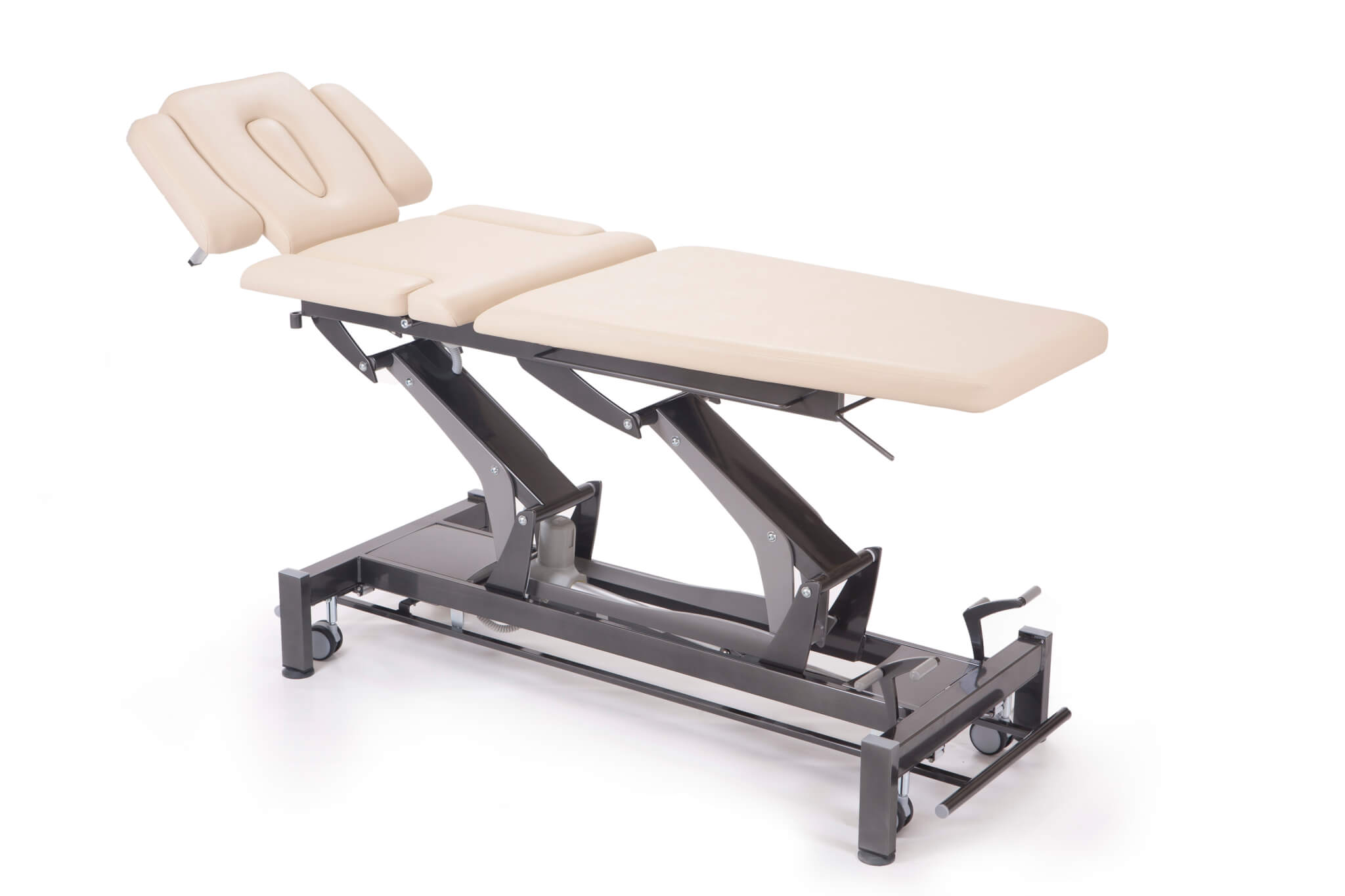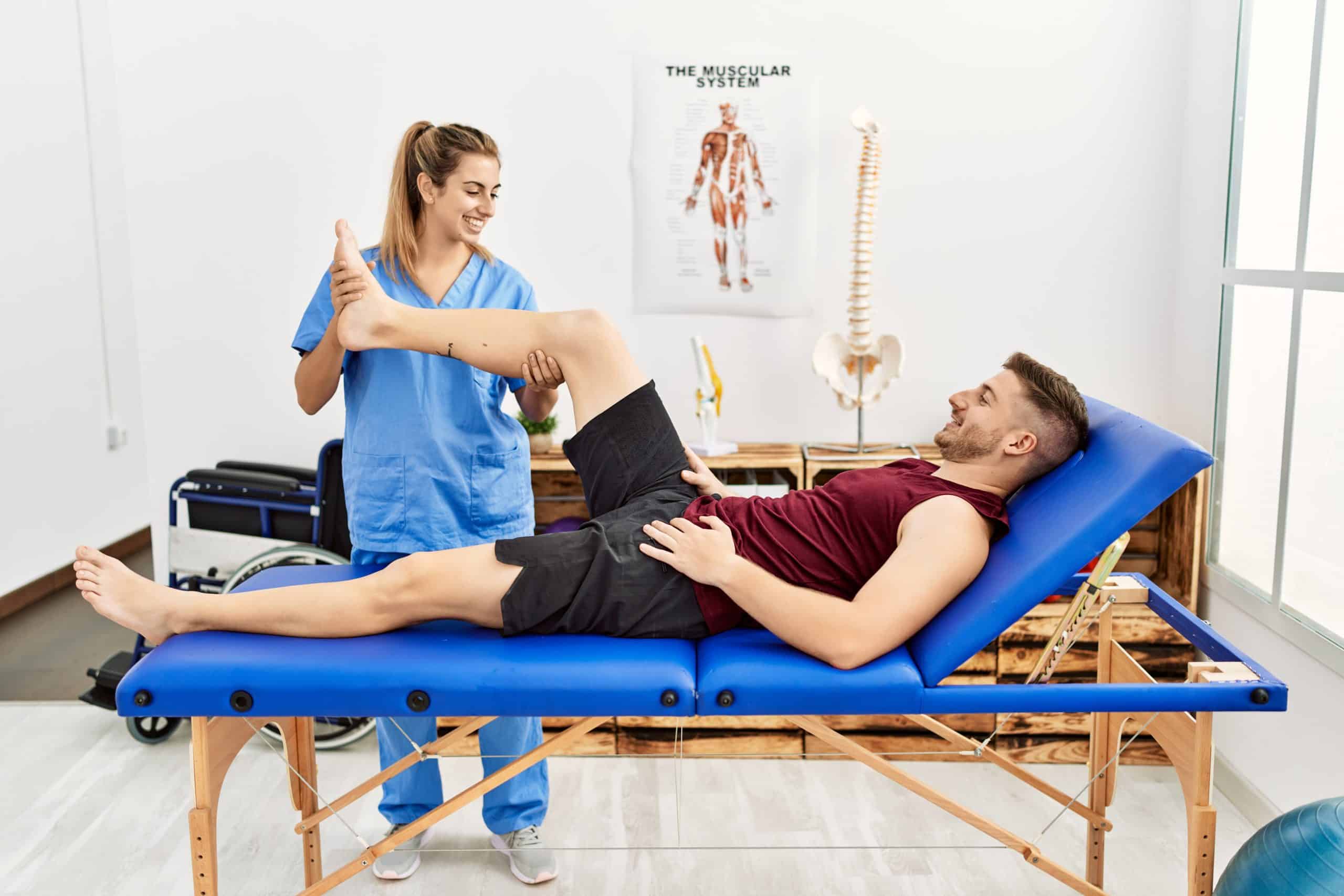How To Choose A Treatment Table
Therapy tables are among the most frequently used pieces of equipment in an injury rehabilitation clinic. Understanding the different types of table and how to choose the right design is a crucial part of providing the most effective treatment to patients. In a basic sense, a good treatment table has to measure up to basic technical features and should also be comfortable for patients. The best treatment tables also provide the opportunity for therapists to optimize their treatment in a safe and ergonomic way. The following is a breakdown of the different types of treatment tables, their use for medical professionals and their essential features. It will provide guidelines for deciding how to choose a treatment table that will meet the needs of your clinic and your patients
Chiropratique
Most chiropractic treatment tables feature lumbar, cervical, thoraric and/or pelvic sections with either manual or pneumatic drops. If the chiropractor applies a quick thrust, the table section will drop. It therefore facilitates the chiropractor’s work by allowing for a less abrupt adjustment.
Massothérapie
For massage therapists and their patients, a critical factor is thick and comfortable padding. Such padding makes patients more comfortable and relaxed during their treatment. It will also resist the deep pressure the therapist applies during massage. Massage treatment tables also often offer extra support in the form of a head rest. Specialty massage tables have user-specific features. For example, for pregnant women, special tables include recessed areas to accommodate a pregnant woman’s increased breast size and abdomen.
Physical Therapy and Sports Treatment:
Treatment tables for physical therapy and sports medicine professionals are usually flatter and less thickly padded. With these tables, the focus is less on comfort, and more on allowing the therapist to effectively manipulate the body. The more rigid table also allows the patient to perform accurate therapeutic movements. Therapy tables for physical therapy or sports injury treatment have adjustable backrests and foot/knee sections. These allow the precise therapeutic positioning needed to rehab back and knee injuries and conditions.
Dual Use
If your clinic is offers more than one type of therapy, this too needs to be a factor in your thinking about how to choose a treatment table . Treatment tables that are most commonly used in multiple circumstances are chiropractic and massage tables. These treatment tables have quite a few features in common, including being sectioned. This makes it possible to position a patient for particular procedures and treat isolated areas of the nervous and muscular systems individually.
Features to Consider when Deciding How To Choose A Treatment Table
Available Space
The space available to you must be taken into consideration when thinking about how to choose a treatment table for your practice or rehabilitation services. When reflecting on this question, there are two main types of treatment tables to think about; wall-mounted and freestanding.
If space is in short supply in your clinic, you might look at the wall-mounted designs on offer. These designs flip up when not in use, and make more space available. Otherwise, you are free to take your pick from the free standing options available.
Weight Capacity
Different treatment tables are designed to bear different weight capacities. When considering how to choose a treatment table, think about whether you need an average or bariatric table.
Bariatric treatment tables accommodate patients who weigh between 800 to 1000 pounds. Some treatment tables also feature extra wide beds to accommodate bariatric users. When choosing a treatment table, ask yourself if you’ll be working with bariatric patients. If the answer is yes, this is a table feature you will need.
Age Group of Patients
The age of your patients may vary to the extremes, from children to teans, adults and elderly individuals. When selecting treatment tables, you will need to take the needs of all these patients into account.
If you are treating elderly patients, you may want to choose a table with more padding and that is more accessible.
If some of your patients are children, or if you specialize in pediatric treatment, you’ll want a table proportioned for small bodies. You may even want to design the table and the office to make children more comfortable. For example, you can opt for treatment tables with colorful graphics and child-friendly themes, like zoo animals or superheros.
Table Design
There are two major types of treatment table designs; adjustable and stationary. An adjustable treatment table will fold up or down to increase the number of positioning options for treatment. Adjustable tables are usually favoured by massage therapists and health professionals therapists who are performing examinations, as these types of tables allow patients to sit in an upright position with total body support.
Stationary tables are capable of being used in a variety of environments. They will be most suitable for situations and practices that don’t need or require a full range of movement.
Storage Space
While it may not be your primary concern, it is still important to consider the amount of storage space you will need when outfitting your office or practice with treatment tables.
There are many treatment tables that include shelves and cabinets, which are especially handy for physiotherapists, massage therapists, chiropractors and other medical professionals who have limited storage space. Models vary from one simple shelf, right up to several shelves and an enclosed cabinet, all fitting neatly beneath the treatment surface as to not interfere with patient care.
Accessibility
Determining the level of accessibility necessary to treat potential patients is a crucial when choosing the right treatment table for your facility. You may be treating patients who are in a wheelchair or have severely limited mobility. If so, it would be wise to select a table which is at a convenient height for these patients to transfer onto the treatment area without discomfort or embarrassment.
Portability
The last consideration you will need to analyze when outfitting your practice with a treatment table is whether you will be treating patients in more than one location. This will in turn influence how portable your treatment tables need to be and will be a factor in how to choose a treatment table that works for you.
Portable treatment tables designed for massage, sports therapy, and chiropractic treatment are available for therapists who work in more than one location. These tables fold for easy carrying, and some also include the convenience of a carrying case.



